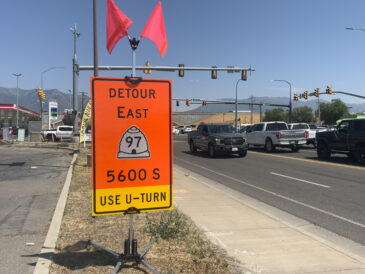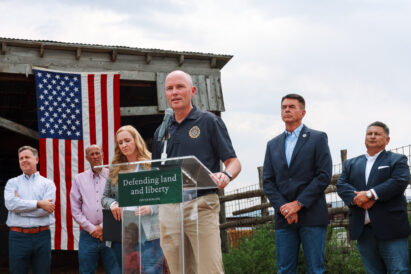Ogden Valley parcel to be preserved; conservation easement finalized

Photo supplied, Summit Land Conservancy
A conservation easement preserving land that once housed the Abbey of Our Lady of the Holy Trinity, a Trappist monastery in the Ogden Valley, has been finalized, officials said Wednesday, July 6, 2022. Part of the former monastery land is shown in this undated photo.HUNTSVILLE — In Cheryl Fox’s estimation, Bill White and Wynstonn Wangsgard are heroes, environmental heroes.
“We should be kissing the ground they walk on,” said Fox, executive director of the Summit Land Conservancy, a nonprofit group focused on preserving open spaces as development pressures grow.
The two philanthropists gave up the opportunity to potentially earn $26 million or more on the sale to developers of the 1,050-acre Ogden Valley plot that used to house a Trappist monastery, the Abbey of Our Lady of the Holy Trinity. Instead, they put the land into a conservation easement to keep it pristine, and those efforts are finally complete.
The papers finalizing the plans were signed on Wednesday and the deed containing the provisions that spell out the development prohibitions was to be filed on Thursday with the Weber County Recorder’s Office.
“That means the property is permanently protected,” Fox said, with agricultural operations allowed, but not commercial, residential or industrial development. “It is as permanent as we can make it. It is intended to be permanent. The deed says it is permanent.”
With the push to build new housing in the Ogden Valley and beyond fierce, that’s significant. Fox said the land could have fetched $26 million to $29 million for traditional development.
Per the conservation easement terms, White and Wangsgard will get $8.8 million in grant funds from the Agricultural Easement Program, run by the U.S. Department of Agriculture’s Natural Resources Conservation Service, plus another $300,000 or so in donations. Fox doesn’t know how much the two paid the Catholic Church to get the land in 2016, prior to the closure of the monastery in 2017, though she wouldn’t have said even if she did know.
“It is an incredible act of philanthropy,” she said. “I call that free-market environmentalism.”
The Ogden Valley Land Trust worked with the Summit Land Conservancy to finalize the conservation easement and Shanna Francis, a member of the land trust board of trustees, also lauded the deal. “By conserving open space, we conserve part of the miraculous, the awe-inspiring that, in turn, protects the very health and well-being of each living being,” she said in a statement.
White, from Huntsville, and Wangsgard, from Park City, offered words of praise to the monks who once managed the land.
White hopes they “feel a sense of pride” at the turn of events, the moves to protect the land. After the monastery closed, the monks who remained left for a senior living facility in Salt Lake City. “We know that you could have developed the property and made a lot more money, but in typical monk fashion, you put the spiritual above the temporal and now all of us are reaping the benefits,” White said.
Wangsgard said he misses the monks and the monastery. “We are so lucky to have had them but the experience was fleeting,” he said.
The monks who once lived on the land were farmers, ranchers and beekeepers “who used agricultural production as a form of prayer and devotion,” according to a Summit Land Conservancy statement. They sold some of the goods they made to the public.
The property is now leased to a farmer who uses it for agricultural production, farming at least part of land. Fox hopes the agribusiness flourishes.
“It is not about money. It is about love. It is about memory,” she said. “It’s just an appreciation for something we are losing all over the place.”



